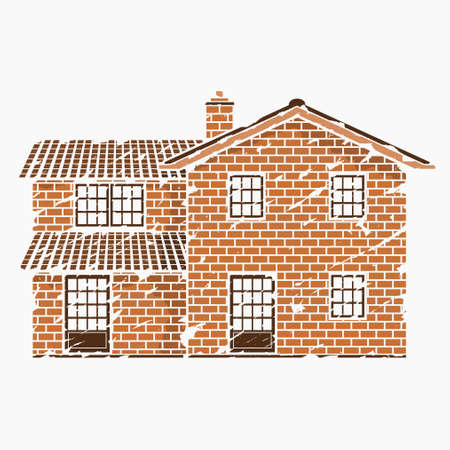Embracing British Architectural Styles
When considering garage conversion ideas in the UK, it’s essential to thoughtfully harmonise your new space with the existing architectural style of your home. Whether your property boasts the timeless charm of a Victorian terrace, the clean lines of mid-century modernism, or the fresh feel of a contemporary new build, ensuring that your conversion complements your homes character will maximise both value and comfort.
Classic Meets Contemporary: Finding Your Style
Start by identifying the architectural era and key design features of your house. This knowledge will guide material choices, colour palettes, and even window shapes for your garage conversion. Blending classic British elements—such as sash windows, exposed brickwork, or decorative cornicing—with modern comforts can create a seamless transition between old and new.
Key Features to Match with Your Home’s Architecture
| Architectural Style | Recommended Features for Garage Conversion |
|---|---|
| Victorian/Edwardian | Sash or casement windows, period skirting boards, ornate coving, traditional fireplaces |
| 1930s Semi-Detached | Bay windows, stained glass details, art deco lighting fixtures |
| Modern/Contemporary | Minimalist finishes, floor-to-ceiling glazing, open-plan layouts, neutral tones |
| Cottage/Rural | Timber beams, rustic stonework, cottage-style doors and hardware |
Top Tip:
Select finishes and fixtures that echo those found elsewhere in your home for a cohesive look. For example, if you have original parquet flooring or distinctive wall panelling inside, consider incorporating similar elements in your converted garage.
Creating Light and Space
One of the primary challenges when converting a garage in the UK is overcoming its typically dark, enclosed nature. By thoughtfully incorporating natural light and an open layout, you can transform your garage into a bright, welcoming extension of your home. Here’s how to maximise light and space for both comfort and value.
Maximising Natural Light
Natural light not only enhances mood but also gives the illusion of more space. Consider the following UK-approved solutions:
| Feature | Description | UK Regulations |
|---|---|---|
| Double-Glazed Windows | Install energy-efficient windows along external walls to flood the room with daylight. | Must meet Building Regulations Part L for insulation and safety. |
| Rooflights/Skylights | Add Velux or similar skylights to bring sunshine directly from above, perfect for single-storey garages. | Should comply with Part B (fire safety) and be fitted by a FENSA-registered installer. |
| Glazed Doors | Replace solid garage doors with French or bifold doors opening onto your garden or patio. | Must be double-glazed and secure; check planning permissions if altering the façade. |
Optimising Layout for Openness
An open-plan design creates a sense of flow and flexibility—ideal for family rooms, studios, or even home offices. Removing internal partitions (where structurally safe) helps achieve this effect. Consider zoning areas using:
- Furniture Placement: Use sofas or shelving units to define living zones without full walls.
- Flooring Choices: Continuous flooring, such as engineered wood or polished concrete, connects spaces visually.
- Clever Storage: Built-in cupboards and under-window benches keep clutter at bay while maximising usable area.
The Power of Paint and Mirrors
Pale paint colours reflect more light, making the space feel larger. Strategically placed mirrors can double perceived daylight by bouncing it around the room—a classic British design trick for compact homes.
Bringing It All Together
A successful garage conversion balances practical regulations with creative design. By integrating ample glazing, skylights, and open-plan layouts approved for UK homes, you’ll create an inviting, airy retreat that stands out—and adds lasting value to your property.

3. Functional Living Solutions
When it comes to garage conversions in the UK, versatility is key. Maximising your space means considering how a garage can be transformed into practical rooms that enhance both daily living and your property’s value. Whether you need a quiet spot for remote work, a welcoming guest retreat, or a creative haven, converting your garage opens up endless possibilities tailored to British lifestyles.
Popular Garage Conversion Ideas for Everyday Life
| Conversion Type | Main Features | UK Lifestyle Benefits |
|---|---|---|
| Home Office | Soundproofing, natural light, built-in storage | Supports hybrid working trends; private and productive environment |
| Guest Suite | Ensuite shower room, compact kitchenette, comfortable bed | Ideal for visiting family or friends; potential for short-term letting |
| Artist’s Studio | Skylights, utility sink, flexible layout | Nurtures creativity; perfect for hobbies or small business ventures |
Creating a Home Office Sanctuary
With remote working now a staple across the UK, transforming your garage into a dedicated office can provide the separation needed between home life and work. Incorporate ergonomic furniture, high-speed internet access, and plenty of daylight to foster focus and productivity. Sound-insulating materials help block out street noise—essential for conference calls or deep concentration.
A Warm Welcome: Guest Suite Transformations
If you frequently host guests, consider converting your garage into a self-contained suite. Opt for space-saving furnishings like wall beds or modular seating to make the most of compact layouts common in British homes. Adding an ensuite shower room ensures privacy and comfort—essentials for visitors or even older family members seeking independence.
The Creative Edge: Artist’s Studios and Workshops
For those with artistic ambitions or hands-on hobbies, a garage conversion offers the perfect blank canvas. Enhance the space with good ventilation and north-facing windows to capture soft natural light—a favourite among UK artists. Sturdy flooring and storage solutions keep tools organised, making your studio both inspiring and practical.
No matter which direction you choose, tailoring your garage conversion to suit your lifestyle needs will ensure every square foot is put to best use—adding both comfort and value to your British home.
4. Insulation and Energy Efficiency
When considering a garage conversion in the UK, ensuring superior insulation and energy efficiency is paramount. British weather can be unpredictable—think chilly winters, damp autumns, and occasional summer heatwaves—so creating a comfortable living environment year-round means addressing thermal performance from the outset.
Insulation: The Foundation of Comfort
Proper insulation is your first line of defence against heat loss and draughts. Focus on insulating external walls, floors, and ceilings to prevent cold spots and improve energy retention. Commonly used materials in UK conversions include rigid foam boards, mineral wool, and multi-foil insulation, all tailored to suit different construction types.
Key Areas to Insulate
| Area | Recommended Insulation Type | Benefits |
|---|---|---|
| Walls | Rigid Foam Boards / Mineral Wool | Minimises heat loss; improves structural integrity |
| Floors | PIR Boards / Polystyrene Sheets | Keeps floors warmer; reduces rising damp |
| Ceilings / Roofs | Multi-Foil / Glass Wool | Prevents heat escaping upwards; aids soundproofing |
| Garage Door (if retained) | Insulated Roller or Sectional Doors | Adds an extra barrier to the elements |
Draught-Proofing: Keeping the Elements at Bay
Draught-proofing is essential for any British home, especially in converted garages where old doors or windows may allow chilly air in. Use weatherstripping around windows and doors, fit brush strips to thresholds, and consider upgrading to double-glazed units where possible. Not only does this keep the space warm, but it also helps with noise reduction—a bonus if your conversion faces a busy street.
Energy-Efficient Heating Solutions
No matter how well-insulated your new space is, efficient heating remains crucial. In the UK context, popular choices include:
- Electric Radiators: Easy to install with precise thermostatic controls.
- Underfloor Heating: Provides even warmth without encroaching on usable space—ideal for sleek, modern conversions.
- Tying into Central Heating: If your system allows, extending existing radiators ensures consistent comfort throughout your home.
- Smart Thermostats: Enable you to control heating remotely and optimise energy usage according to your daily routine.
Sustainable Touches for Eco-Friendly Living
If you’re keen on sustainability, consider incorporating solar panels or ground-source heat pumps where feasible. These solutions not only enhance the value of your property but also future-proof your home against rising energy costs.
5. Planning Permissions and Building Regulations
Before embarking on your garage conversion journey, understanding the essentials of UK planning permissions and building regulations is crucial for a smooth, stress-free transformation. Navigating these requirements not only ensures legal compliance but also safeguards the comfort, safety, and value of your newly created space.
Planning Permission: Do You Need It?
In many cases, converting a garage into a living area falls under permitted development rights, meaning you may not need to apply for planning permission. However, there are important exceptions, particularly if:
- Your home is listed or located in a conservation area
- The conversion significantly alters the external appearance
- You plan to create a separate dwelling
- Local authority restrictions apply (Article 4 Directions)
It’s always wise to check with your local council before starting work to confirm whether permission is required for your particular project.
Building Regulations: Ensuring Quality and Safety
Regardless of planning permission status, all garage conversions must comply with current UK building regulations. These regulations ensure the conversion meets standards for structure, insulation, ventilation, fire safety, electrical systems, and accessibility. Your local Building Control officer will inspect key stages of the project to certify compliance.
| Key Regulation Area | Requirement |
|---|---|
| Thermal Efficiency | Upgrade walls, floors, and roof to meet insulation standards (Approved Document L) |
| Fire Safety | Install fire doors and escape windows as necessary (Approved Document B) |
| Ventilation | Provide adequate natural or mechanical ventilation (Approved Document F) |
| Structural Integrity | Strengthen foundations and support beams if needed (Approved Document A) |
| Damp Proofing | Add damp-proof membranes and barriers (Approved Document C) |
| Electrical Safety | Use certified electricians for new wiring (Part P) |
Navigating Local Authority Guidelines
Your local authority will provide guidance specific to your borough or district. It’s advisable to engage with them early in the process to clarify any unique requirements or restrictions and avoid costly mistakes. Submitting a full plans application can offer peace of mind that your design will be approved from the outset.
Top Tips for a Hassle-Free Conversion:
- Liaise with local authorities before committing to designs or builders
- Hire professionals experienced in UK garage conversions
- Keep thorough records of permissions and inspections for future resale value
- Select contractors who guarantee all work meets relevant standards
By proactively addressing planning permissions and building regulations, you’ll unlock a seamless path towards creating a comfortable, valuable new living space within your home.
6. Enhancing Kerb Appeal and Property Value
When it comes to garage conversions, first impressions truly count. In the UK, kerb appeal is an essential factor that not only makes your home more inviting but can also significantly elevate its market value. By thoughtfully considering both design principles and finishing touches, you can ensure your newly converted space complements your homes exterior while offering maximum comfort inside.
Design Principles for a Cohesive Look
To create a seamless transition from the outside in, focus on architectural harmony. Match the new windows or doors with existing styles, choose external materials that echo your property’s character—be it classic brickwork, timber cladding, or modern render—and pay attention to colour palettes that blend effortlessly with neighbouring homes.
Key Exterior Enhancements
| Feature | Design Tip | UK-Specific Advice |
|---|---|---|
| Windows & Doors | Select frames and glazing that mirror your original features. | Sash windows or heritage-style doors suit Victorian/Edwardian homes; slimline aluminium for contemporary properties. |
| Landscaping | Add planters, borders, or a paved path leading to the new entrance. | Choose low-maintenance native plants like lavender or box hedges for year-round structure. |
| Lighting | Install outdoor lighting to highlight pathways and entrances. | PIR sensor lights are practical for British weather and dark evenings. |
| Finishing Touches | Add house numbers or a statement letterbox for a polished look. | Copper or brushed steel details withstand the UK climate. |
Interior Finishing Touches That Matter
The interior should feel as thoughtfully designed as the exterior. Use layered lighting—think pendant lamps and wall sconces—to create ambience. Opt for durable flooring such as engineered wood or luxury vinyl that copes well with wet British weather. Consider underfloor heating for added comfort during colder months—a true selling point in the UK market.
Maximising Market Value
A well-executed garage conversion can add up to 20% to your propertys value if it enhances both liveability and street presence. To appeal to potential buyers, consider versatile layouts (like a home office or guest suite) and ensure all work meets local planning and building regulations. By combining aesthetic upgrades with practical improvements, you’ll enjoy immediate lifestyle benefits and long-term financial rewards.


